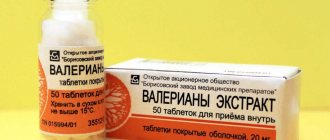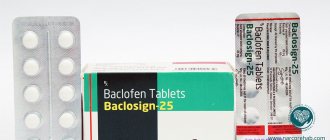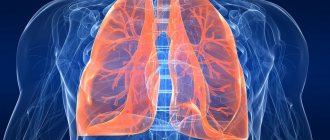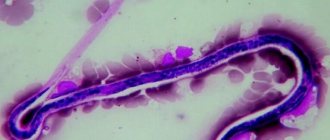Detailed information about diseases starting with the letter “O” is here: Fainting (syncope); Occlusive hydrocephalus; Occlusion of the carotid arteries; Olivopontocerebellar degenerations; Optico-chiasmatic arachnoiditis; Neuromyelitis optica; Brain tumors; Cerebellar tumors; Tumors of peripheral nerves; Spinal cord tumors; Brain stem tumors; Central nervous system tumors; Tumor of the cauda equina; Tumor of the pineal gland; Oromandibular dystonia; Osteocondritis of the spine; Brain swelling; Carbon monoxide poisoning; Ophthalmoplegic migraine.
Concept
Carbon monoxide poisoning is an abnormal condition that occurs when air or smoke with a concentrated admixture of carbon monoxide enters the body. During a medical examination, patients are diagnosed with malfunctions of the central nervous system, respiratory system and cardiovascular system. The main factor in the presence of intoxication is a pronounced deformation of the surface layer of the skin, when the vessels are filled with blood cells. The final conclusion is drawn up on the basis of information received from the patient, the clinical picture, and determination of the amount of carboxyhemoglobin in the blood. In emergency situations, you can help the victim using oxygen therapy procedures and by carrying out detoxification measures. At the end, symptomatic conservative treatment is prescribed.
a brief description of
Carbon monoxide poisoning begins when the permissible limit (0.08 mg/liter) of the element in the air, which is inhaled by the lungs, increases. The degree of damage is directly dependent on the level of the chemical compound around and the upper limit of integration of the concentration of the hazardous substance over time. When the poisoned gas enters the body in an amount of 3-5 mg/l within 60 minutes, a person has a severe stage of the anomaly. Inhalation of a mixture containing 14 mg/l of carbon composition within 2-3 minutes is fatal. A painful condition of this kind ranks high among the most common types of poisoning in the world. Ahead of it are: alcohol intoxication, narcotic and pharmacological. A harmful process can easily occur in everyday situations or in industrial enterprises.
General information about CO
Carbon monoxide, carbon monoxide, or the well-known carbon monoxide (formula CO) is an odorless, colorless or tasteless gaseous compound that is very toxic and dangerous to human health.
Carbon monoxide is formed during the combustion of any materials that contain carbon - gasoline, natural gas, diesel fuel, coal, firewood and other organic materials, including furniture and household items. The combustion process leads to the oxidation of organic substances and is accompanied by the release of carbon dioxide (carbon dioxide) and water. Ideally, complete combustion is limited to these two substances. However, under normal combustion conditions there is a lack of oxygen (especially in a confined or poorly ventilated space), which leads to incomplete oxidation of carbons and the formation of carbon monoxide.
Some sad statistics - in a fire, the main cause of death is, as you might assume, not extensive burn injuries and death in fire, but carbon monoxide poisoning.
The effect of carbon monoxide is as follows: once the molecules of this compound enter the respiratory tract, they are quickly absorbed into the blood and bind to hemoglobin molecules. This produces carboxyhemoglobin, a substance that interferes with the transport of oxygen throughout the human body and very quickly causes oxygen deficiency.
A small concentration of carbon monoxide (no more than 0.08%) causes suffocation and headache; if it exceeds 0.32%, paralysis and loss of consciousness are observed. If exposed to this concentration for 25-30 minutes, death is most likely.
Depending on the symptoms of carbon monoxide poisoning, there are three degrees of severity:
- Mild severity. This stage is characterized by such signs of carbon monoxide as: general weakness, headache radiating to the frontal lobe and temples and temporal areas, dizziness and tinnitus, as well as impaired visual function. Poisoning is accompanied by a dry cough, lack of air, shortness of breath, lacrimation, nausea and tachycardia.
- Moderate severity. In this case, all of the above symptoms not only persist, but also get worse. Thus, the feeling of nausea turns into vomiting, fog and short-term loss of consciousness, hallucinations, and oppressive chest pain occur.
- Severe degree. As mentioned above, the main property of carbon monoxide is its ability to cause oxygen deficiency in the human body. With relatively long-term exposure (15-25 minutes), an irreversible change in biological and physical parameters in the blood occurs, accompanied by paralysis, long-term loss of consciousness, up to a coma. Convulsions, involuntary urination and bowel movements, and blue discoloration of the skin and mucous membranes are also observed. In this case, a person’s breathing, due to oxygen deficiency, becomes shallow and intermittent. Next comes death.
Origins
Various reactions of incomplete combustion of organic substances are always accompanied by the toxic release of carbon monoxide. Often, the causative factor of poisoning by combustion products, in particular carbon monoxide, is ignition. One of the main problems is the absence of any noticeable manifestations of the mixture during leakage. At risk are women during pregnancy, children and people suffering from cardiovascular failure.
The main sources that contribute to exceeding the permissible limit for carbon monoxide content include household and industrial factors.
Domestic situations - such moments arise as a result of improper use of the stove, gas installations, burnt out electrical wiring, for example:
- Staying in a confined space for a long time near a running car engine.
- Frequent smoking of hookahs.
Industrial situations - toxic components quickly penetrate into the pulmonary apparatus of workers in mines, blast furnaces and open-hearth furnaces. The reaction of synthesis of dangerous chemical particles also contributes to poisoning. The anomaly begins when sanitary rules are neglected or not observed and the norms for the use of working devices/equipment are violated.
What is carbon monoxide and why is it dangerous?
Carbon monoxide (carbon monoxide, or carbon monoxide, chemical formula CO) is a gaseous compound formed during combustion of any kind. What happens when this substance enters the body?
After entering the respiratory tract, carbon monoxide molecules immediately end up in the blood and bind to hemoglobin molecules. A completely new substance is formed - carboxyhemoglobin, which interferes with the transport of oxygen. For this reason, oxygen deficiency develops very quickly.
On this topic ▼
Household gas appliances: rules of operation and use
The most important danger is that carbon monoxide is invisible and not perceptible in any way, it has neither odor nor color, that is, the cause of the illness is not obvious, it is not always possible to detect it immediately. Carbon monoxide cannot be felt in any way, which is why its second name is the silent killer. Feeling tired, lack of strength and dizzy, a person makes a fatal mistake - he decides to lie down. And, even if he later understands the reason and the need for going out into the air, as a rule, he is no longer able to do anything. Many could be saved by knowledge of the symptoms of CO poisoning - knowing them, it is possible to suspect the cause of the illness in time and take the necessary measures to save it.
Operating principle
When a person inhales air that contains a high content of carbon monoxide, it is transported to the respiratory part of the body, where it is absorbed by the blood cells. The chemical component is quite similar to hemoglobin, myoglobin and enzymes that contain iron. Carbon dioxide freely enters into a process with these elements, during which a type of oxygen is formed that is unable to be transported into carboxyhemoglobin tissues. A patient with this diagnosis develops hypoxia. Slow dissolution of compounds has an adverse effect on the nutritional properties of internal organs and tissues. In combination with this, a process of unstable operation of biochemical phenomena occurs, which is based on the functioning of iron-containing enzymes. With the accumulative activity of under-oxidized metabolic products, additional poisoning occurs, spreading to the central nervous system and other organs.
Detoxification as part of rehabilitation at the Healthy Stavropol Center
Poisons and toxins are deposited in body tissues regardless of the use of the methods listed above for their removal. And you can get rid of these deposits only with the help of a special step in the rehabilitation program provided in our center.
If a person has taken alcohol or drugs, this step helps to get rid of the hidden effects of these poisons: fatigue, depression, irritability, etc., caused by toxins entering the bloodstream. This is a non-medical detox; no drugs or medical techniques are used. Call us now to learn more about the program!
Varieties
Toxic disease has two forms of progression in the patient: acute and chronic. The course of the anomaly depends on the gas concentration factor in the inhaled air and the duration of the patient’s stay in the affected area. During a high jump in acceptable standards within a short period of time, doctors diagnose the acute stage. Prolonged stay in a harmful area and constant inhalation of carbon monoxide with a minimum amount of harmful components causes the progression of a chronic type of disease.
In medicine, there are three degrees of intoxication:
- Mild - marked by a sudden onset of symptoms that quickly disappear after the end of the harmful reactions (some problems can last for 24 hours). The hemoglobin level does not cross the 30% mark.
- Average - is to increase carboxyhemoglobin to 40%. The manifestations are pronounced in nature, and the symptoms stop only after professional medical care is provided. The patient may experience problems for several days.
- Severe - more than 50% of harmful substances enter the body. The patient has multiple serious lesions of internal organs and important systems. Usually, negative consequences develop in the future. Complaints persist for several weeks.
There is also an apathetic form of carbon monoxide poisoning; it has the ability to masquerade as other deviations from the norm. Doctors in the field of toxicology and resuscitation distinguish the disease according to its clinical manifestations:
- Lightning fast.
- Euphoric.
- Syncopal.
Sources of danger
Nowadays, cases of poisoning occur a little less frequently than in those days when heating of residential premises was predominantly stoves, but there are still enough sources of increased risk.
On this topic ▼
Rules for storing and using gas cylinders
Potential carbon monoxide poisoning hazards:
- houses with stove heating and fireplaces. Improper operation increases the risk of carbon monoxide entering the premises, thus causing entire families to burn out in their homes;
- baths, saunas, especially those that are heated “on black”;
- garages;
- in industries using carbon monoxide;
- long-term stay near major roads;
- fire in a closed space (elevator, shaft, etc., which are impossible to leave without outside help).
Useful article: Furnaces requirements and fire safety rules
What is carbon monoxide poisoning?
As a result of the low ability of the brain to function without oxygen, during toxic oxide damage, the first thing that appears is a neurological failure. The main features include:
- Painful sensations of pressure in the head area (mostly the temple and forehead area suffers).
- Dizziness occurs and loss of consciousness is possible.
- Nausea and gag reflexes are present.
- Noise is generated in the ear canals.
- Visual disorders (patients complain of double vision of external objects, abnormal color perception).
- Gait disturbance (unsteadiness appears).
- A sharp decrease in the level of reaction.
- With greater exposure to the gas, convulsions of a tonic and clonic nature begin.
- Overheating of the body.
- The process of depression of consciousness (the patient may fall into a coma).
- There is a possibility of memory loss (retrograde amnesia).
- Deviations of the cardiovascular system progress (tachycardia, disturbances in heart rhythm and its conductivity).
- The pain moves to the chest area.
- Bronchitis or toxic pneumonia is formed, which are characterized by shortness of breath, dry cough, and high body temperature.
The euphoric stage of the disease is manifested by psychomotor disorders. The patient experiences abnormal arousal, good mood, the absence of critical statements in relation to his health abruptly gives way to delusions with hallucinations. They can cause serious disturbances in the patient's consciousness. The syncopal form has a sharp decrease in blood pressure and collapse. In the case of a rapid toxic process, at the end of a short period of convulsive manifestations, amnesia and death occur.
Risks
Timely rescue of the victim from a fire trap contributes to the spontaneous disappearance of signs of the effects of carbon monoxide on the functionality of the main body systems without consequences. When diagnosed with intoxication of the second and third stages, the patient may experience neurological disorders. The patient has been experiencing painful sensations in his head for a long time. There is a possibility of mononeuritis spreading in different places, decreased muscle strength, Parkinson's tremor, etc. Complications occurring in the circulatory system are distinguished by intracardiac obstruction, the formation of blood clots in the vascular channels. Inhalation of carbon monoxide in high concentrations while carrying a child is fraught with the formation of abnormal diseases and fetal defects. There are many fatal cases of intoxication in history.
Intoxication and methods of combating it
Most often, people resort to detoxification due to addiction. Alcohol and drugs are poisons that poison the body. And it is worth knowing those techniques that, instead of the expected benefit, will cause harm. Here is what the chief narcologist of the Ministry of Health of the Russian Federation, Evgeniy Brun, says about this: “For example, they offer quick opiate detoxifications on the market. The person is put under anesthesia for 72 hours. Through a dropper, the patient is administered a drug - an antagonist of opiate receptors. In theory, abstinence should subside within three days. But the trick is that all this time the body also receives a narcotic load of barbiturates, which, in turn, can cause an increase in organic pathology of the brain. And one more thing: after such procedures, the craving for drugs can be so great that people immediately run away from the clinic to continue injecting drugs.
The same applies to the methods of plasmapheresis and hemodialysis, in common parlance - blood purification. Pathological attraction to drugs or alcohol increases sharply after them.”
Diagnostic methods
The first step when entering a medical facility to receive emergency emergency care is to conduct an examination and collect anamnestic information. A clear sign that the patient has undergone a serious toxic injury is a red tint to the skin. Medical staff of the toxicology department and intensive care unit do not highlight any abnormal symptoms of physical origin. On physical examination, the patient exhibits tachycardia, body overheating, intermittent heavy breathing, and low blood pressure. For a complete diagnosis, the following is prescribed:
- Donating blood for laboratory tests.
- Examination of the sternum using an X-ray device.
Atypical forms
There are two of them - fainting and euphoric.
Symptoms of fainting:
- pallor of the skin and mucous membranes;
- decreased blood pressure;
- loss of consciousness.
Symptoms of the euphoric form:
- psychomotor agitation;
- mental dysfunction: delirium, hallucinations, laughter, strange behavior;
- loss of consciousness;
- respiratory and heart failure.
How is treatment done after carbon monoxide poisoning?
If it is possible to receive a dose of toxic damage, it is necessary to urgently evacuate the victim to a safe place, provide him with a flow of fresh air, stimulate the respiratory system and warm him up. Doctors prescribe oxygen therapy procedures and administer an antidote. If necessary, doctors perform resuscitation. The patient will require involuntary hospitalization. He is left for some time in the hospital for detoxification and relief from symptoms. Prescribe medications and vitamin complexes.
Literature:
1. Poisoning with carbon monoxide (carbon monoxide) / ed. Zobnina Yu. V. - 2011. Emergency care. A short reference book for a local doctor / ed. Shvartsa L. S., Nikitina B. A. - 1963.
2. Acute carbon monoxide poisoning, complicated by thermochemical damage to the respiratory tract, in fire conditions: Abstract of the dissertation / Polozova E.V. – 2011.
3. Treatment of encephalopathy due to carbon monoxide poisoning / Endaltseva S. M., Baryshev B. A., Vershinin V. N. // Journal of Neurology and Psychiatry named after. Korsakov. - 2008 - No. 108 (4).
4. Clinical toxicology / Luzhnikov E. A. - 1999.
It's winter outside, stoves and fireplaces are burning in the houses. Many people still do not give up traditional wood heating: not everyone has gas, and electric heaters are not very economical. Yes, and it’s probably difficult to replace something with a living flame, which is so pleasant to warm up in the evenings.
But a stove or fireplace can pose a threat to the life and health of its owner. And now we are not talking about the possibility of a fire. There is an invisible, imperceptible, insidious danger - carbon monoxide. Poisoning by this combustion byproduct often leads to death, so it would be a good idea to know how to prevent the danger and what to do if someone does get hurt.
A little bit of theory
Carbon monoxide, or carbon monoxide, or carbon monoxide (CO), is often called the “silent killer.” The main problem is that it has no color, no taste, no smell, and does not cause any sensation at all (until it is too late). It cannot be detected by eye, and its presence remains unnoticed by the victim. In this case, the gas spreads quickly, mixing with the air without losing its toxic properties.
For humans, carbon monoxide is the strongest poison . Entering the body during breathing, it penetrates from the lungs into the circulatory system, where it combines with hemoglobin. As a result, the blood loses its ability to carry and deliver oxygen to tissues, and the body very quickly begins to experience a lack of oxygen. The brain is primarily affected, but other organs may also be affected, depending on the general state of health. According to the old proverb: “Where it is thin, it breaks.”
By the way, it would be a mistake to think that the threat of poisoning exists only in houses with stove heating. Carbon monoxide is formed during incomplete combustion of ANY fuel. Gas, coal, firewood, gasoline and so on - it doesn’t matter. Only the degree of risk is different.
The “leader” in terms of the amount of carbon monoxide released during combustion is coal. Cars are considered the main source of pollution for the environment. They are also potentially dangerous for their owners—every year, many motorists die in their own garages. The habit of working with the car engine running (for heating) plus poor ventilation - and here you have a sad result.
Finally, according to scientists, the concentration of CO in cigarette smoke exceeds the maximum permissible by 8 times, so those who like to smoke indoors and those who find themselves with them are also at risk - especially if the ventilation is poor.
Natural gas itself is not dangerous - but only if it is of proper quality, has good ventilation and uses properly installed equipment. Cases of carbon monoxide poisoning in apartments where gas water heaters are located, alas, are recorded annually.
How to prevent carbon monoxide poisoning? As a matter of fact, most people know about this. However, poisoning does occur. This means we will repeat what may seem to some to be banal and well-known rules.
1. Use only working equipment. Cracks in the stove masonry, a clogged chimney and similar “little things” can lead to serious consequences.
2. Make sure there is good ventilation. In city apartments, poisoning occurs just during the off-season: the central heating is not turned on, and residents use gas stoves to escape dampness and cold. With insufficient ventilation, even such “safe” devices sometimes become the cause of tragedies.
3. Do not close the stove damper until the coals have burned out. This is what everyone seems to know. Nevertheless…
4. Car enthusiasts, do not work in the garage while the car engine is running. Ventilation here is often “lame” (see point 2), and therefore there is no need to tempt fate.
Signs of carbon monoxide poisoning
Symptoms of poisoning can vary markedly - depending on the degree of damage, the general condition of the body, existing diseases and other circumstances. However, you should definitely be wary of symptoms such as:
- dizziness, headache,
- nausea, vomiting,
- noise in ears,
- shortness of breath, cough,
- watery eyes.
The victim's condition is often agitated, but in some cases, on the contrary, lethargy and drowsiness are observed. There may be a disturbance in the functioning of the vestibular apparatus (loss of balance, problems with coordination of movements), hearing and vision disorders. These symptoms may precede loss of consciousness.
In cases of moderate to severe poisoning, problems in the functioning of the cardiovascular system are very likely. Arrhythmias occur (note that the pulse has become uneven, intermittent); Blood pressure drops, body temperature decreases. In such a situation, without timely medical assistance, the victim may die.
First aid for carbon monoxide poisoning
In case of mild poisoning (if the case is limited to dizziness and nausea), it is usually enough to take (or take) the person out into the fresh air. But until his condition completely returns to normal, observe and record any changes in order to come to the rescue in time, if necessary.
Severe poisoning and moderate injuries usually require hospitalization. And, in any case, you should not try to do without medical help - call an ambulance without delay.
Why? Firstly, in such cases it is difficult to predict how the situation will develop: sometimes the victim may die from cardiac arrest; convulsions or paralysis may occur; respiratory depression and other symptoms that require immediate qualified intervention are very likely.
Secondly, carbon monoxide poisoning is dangerous and has the possibility of severe complications, including from the brain, respiratory system, and cardiovascular system. Timely and properly provided medical care can prevent many of these complications.
The main task while waiting for a doctor is to alleviate the victim’s condition to the best of your ability.
If chills begin or the temperature drops, wrap them up warmly and give them sweet tea (if the person is conscious).
Make yourself comfortable (and preferably in the fresh air or at least near an open window) to make breathing easier.
Calm down if scared or agitated.
Lay the unconscious person on his side and make sure that his head does not fall back, especially if vomiting suddenly occurs.
If breathing stops, artificial respiration should be done, and if the heart stops, indirect cardiac massage. BUT! These manipulations make sense only if you know how to perform them - otherwise there is a risk of causing even greater harm (although in general, it is reasonable for everyone who often travels outside the city to learn first aid skills - at the dacha, on a hike, fishing).
However, we hope you never have to use these recommendations. But it’s better to face danger fully armed—prepared and aware.
And even better - do everything to avoid such a meeting altogether.
Health to you and your loved ones!










